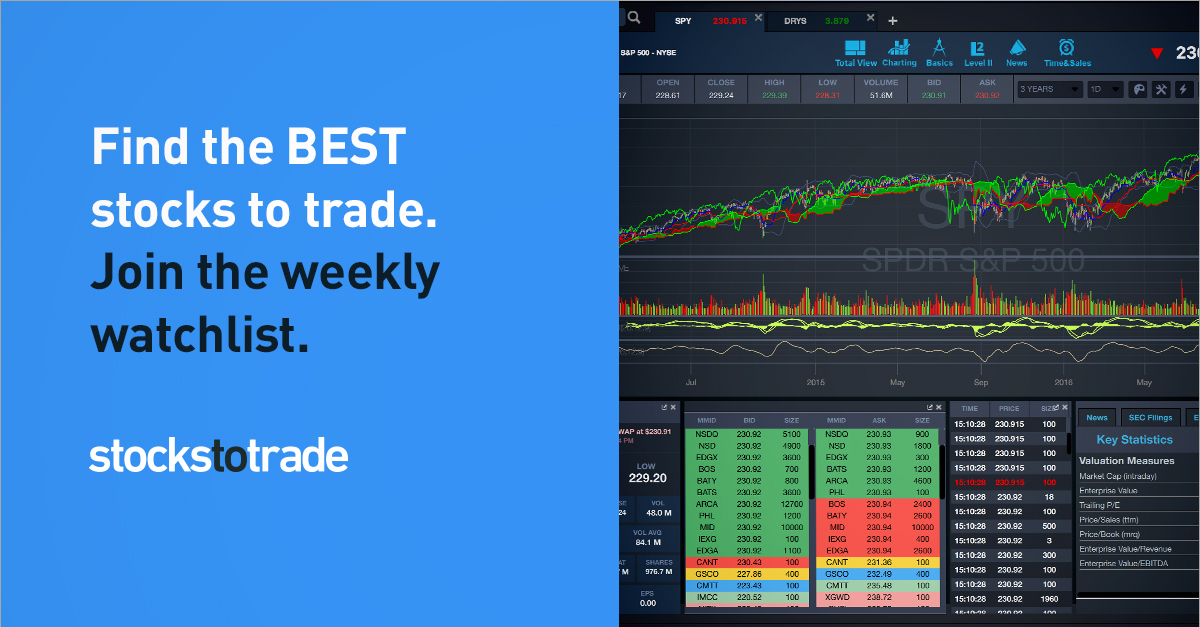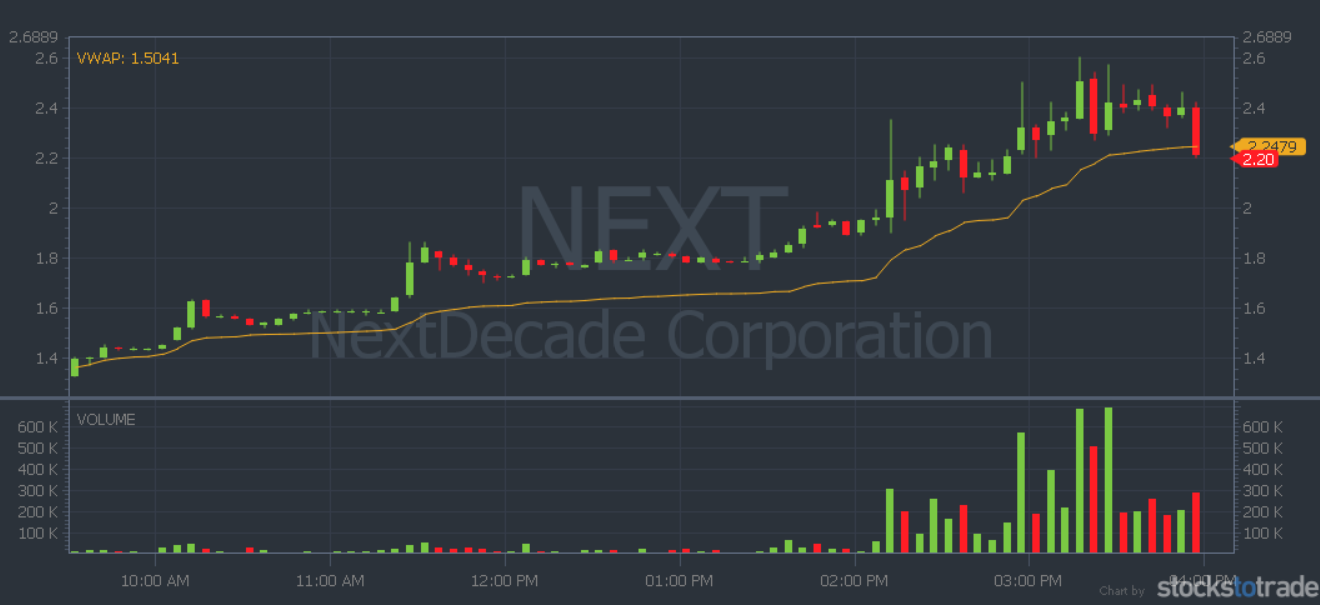As the market shifts in late 2020, so will the top pattern for part-time traders.
It’s a key lesson in learning to adapt to the markets.
This year, we’ve seen a lot of new traders enter the market. That’s contributed to the wildest year I’ve seen in my trading career.
I think I’ve said so nearly every day since I started my Daily Market Briefings on Instagram. That’s where I share my thoughts on the overall market at noon. You can go back and get up to date by checking out our StocksToTrade YouTube channel.
In August and September, the market started to cool down and pull back. What will we see as we near Election Day? Tough to say. Even more reason to learn this top pattern for part-time traders.
And no, you don’t have to be a part-time trader to like this pattern. Plus, stick around for some key tips on how to approach any kind of market.
Table of Contents
First, I gotta say that no pattern works 100% of the time. If anyone says their pattern works every time, run the other direction.
If you trade this pattern, be sure to keep your risk management tight. Just like you would with any other pattern.
In trading this or any pattern, it’s important that you set a stop loss. One of the few things you can have any kind of control over in the market is how much you lose. And even that’s not guaranteed, depending on your strategy.
Make sure you know what you’re risking when you make your trading plan. And always respect your stop loss.
Now, let’s get to the pattern.
The Afternoon VWAP-Hold High-of-Day Break
I say it a lot: You have to let a stock prove itself. You can’t go chasing spikes hoping they’ll keep going. The great thing about this pattern is that it gives the stock an opportunity to fail without you.
The Top Pattern for Part-Time Traders: The Setup
This pattern can be great for traders who miss the morning rush.
Let’s break down where to start. Always check for the following — a former runner, in a hot market, with news or another catalyst. That will snag a lot of traders.
If it’s a stock in a hot sector, that’s great. Other stocks like it have likely run recently or are currently running. That can give you more reason to be excited about this stock’s potential. If it’s a former runner, maybe you remember it. Maybe you even traded it in the past.
Next, check the float. You want a stock with a low float. Think back to an economics class where you learned supply and demand. The float is the supply.
And the less supply there is, the greater the price action can be in response to demand. You’re looking for a float that’s definitely below 20 million shares and ideally below 10 million shares.
The next thing you want to see is volume coming in. Look for unusual volume in relation to the average volume. Let’s say at least double the 60-day average volume. The more the better.
The stock runs up in premarket and it hits the top gainer lists. More often than not, it comes back down before the market opens.
Throughout the course of the day, you want it to establish a support level no lower than 2% below VWAP.
Then, going into the 2 p.m. window (Eastern), you’re going to look for a volume push into the high of the day. It doesn’t always happen at exactly 2 p.m.
Wait for the high-of-day break. That can indicate the stock is ready for the next leg up.
Clear Risk
One of the great things about this pattern for part-time traders is that it can give you a clear stop loss.
During a breakout, there can be a serious pullback. If you find a risk level that you’re more comfortable with, by all means, use it. I like to use the VWAP as my stop. If the stock is still breaking out and above VWAP, as far as I’m concerned, it’s still in play.
You don’t have to wait to see if VWAP holds to stop out of this play. Respect your own risk tolerance and protect your account.
I like VWAP high-of-day breaks at 52-week highs. That means there’s little to no resistance overhead. But that doesn’t mean the stock has to be at 52-week highs.
With some technical analysis, you can find stocks with light resistance or room to run. So it’s important to step up your technical analysis game.
(As an Amazon Associate, we earn from qualifying purchases.)
Check out an example on the chart for Nextdecade Corp. (NASDAQ: NEXT).
What This Trade Might Look Like For You
No matter which pattern for part-time traders you want to trade, you gotta start at square one. So first, fire up your scanner. I’m a little biased … but I love StocksToTrade.
Next, find the day’s low-float top runners with volume.
Then, find the news and make sure there’s a good reason for the run. (StocksToTrade’s new Breaking News feature can be a huge help here.)
Now, you wait for the high-of-day break around the 2 p.m. window. If it plays out well for your strategy, you buy the breakout, risking off VWAP.
If you’re a part-time trader, maybe you have a small account or are under the PDT rule. Here’s another great thing about these VWAP holds … A lot of these high-of-day breaks lead to new highs.
So if the stock shows strength into the close, you may have an opportunity to turn it into a swing trade. You can save yourself a day trade.
Now let’s cover how to be a steady trader in any kind of market…
 Take It Slow and Grow Your Account Steadily
Take It Slow and Grow Your Account Steadily
No matter your account size, if you’re a beginner, you gotta take it slow. First, you have to gain consistency.
You can work toward consistency by learning patterns that work for you and sticking to those patterns.
If you go chasing any stock that’s hot, you’ll get burned. Don’t be stubborn. I’ve been there. So I really get how painful it can be.
You want to learn the best, most consistent patterns that work for your lifestyle, account, size, and strategy. Whether that’s a pattern for part-time traders or a swing trade strategy, that’s up to you. The key is to start small, manage your risk, and get comfortable with the pattern.
Paper Trading
Watching a babbling brook isn’t the same as wading in or even dipping in your toes. Hearing me explain patterns isn’t the same as actually trading them. That’s why I recommend using StocksToTrade’s paper trading feature.
Paper trading is simulated trading. It’s how you can practice getting used to executing trades in real time without risking your hard-earned cash.
Think about it … Fighter jet pilots don’t hop into an F-15 on day one and take to the skies. They train in simulators first. That’s how they get a taste of the action before they put their lives in danger.
You don’t want to put your account on the line without a little practice first. Put in that time, do the work, and make sure you learn how to protect and potentially grow your account.
Some people say paper trading lacks the emotional element of being in an actual trade. I think that’s true. Most people don’t get the same emotional experience when trading on a simulator.
You gotta start somewhere. I think it’s smart to get a feel for the mechanics before you add in the element of emotions. If you want to skip paper trading and dive right in, I can’t stop you.
But I’ve heard many horror stories over the years about people who went too big too fast and lost their entire accounts.
If you’re a new trader looking to get in right away, paper trade or…
Trade Small
If you have a commission-free broker, you don’t need to worry about overcoming commissions. You can take smaller positions.
Remember the rule of 10. If you buy 10 shares, every 10 cents the stock moves is $1. If you’re trading some of these mid-caps, dollar moves are common.
You don’t have to risk your whole account to get the whole experience.
Once you know your patterns, you know when to cut your losses. If you’ve found consistency, then you can consider sizing up. Until then, it’s better safe than sorry.
The market can be a dangerous and frustrating place. Play it safe.
Your first step is to stay in the game long enough to figure it out. If you blow up your account, the financial and emotional losses can be devastating. You might even walk away for good.
Trading is a serious business, and I want you to stick around. I want to hear your success stories!
 Join the Steadytrade Team
Join the Steadytrade Team
Now you have the lowdown on a top pattern for part-time traders and key tips to help you stay in the trading game.
Ready to take your market education further?
Every morning, I go over the top possible plays of the day with our SteadyTrade Team mentorship program. And I go live every trading day with twice-daily webinars.
Joining the SteadyTrade Team is a great way to commit to your education and join a community of traders. Plus, you’ll get access to tons of archived webinars. It’s how you can study and find a strategy that works for you.
And as a team, we go over possible trades for the day and make trading plans. You’ll be a part of an excellent group of traders to chat and learn with — all dedicated, serious, and committed.
We all start somewhere. And you don’t have to start alone. Hope to see you in the SteadyTrade Team chat soon!
What’s your top pattern for part-time traders? Have you seen the VWAP hold work in your trading? Leave your comment below! It’s great to hear from you.


